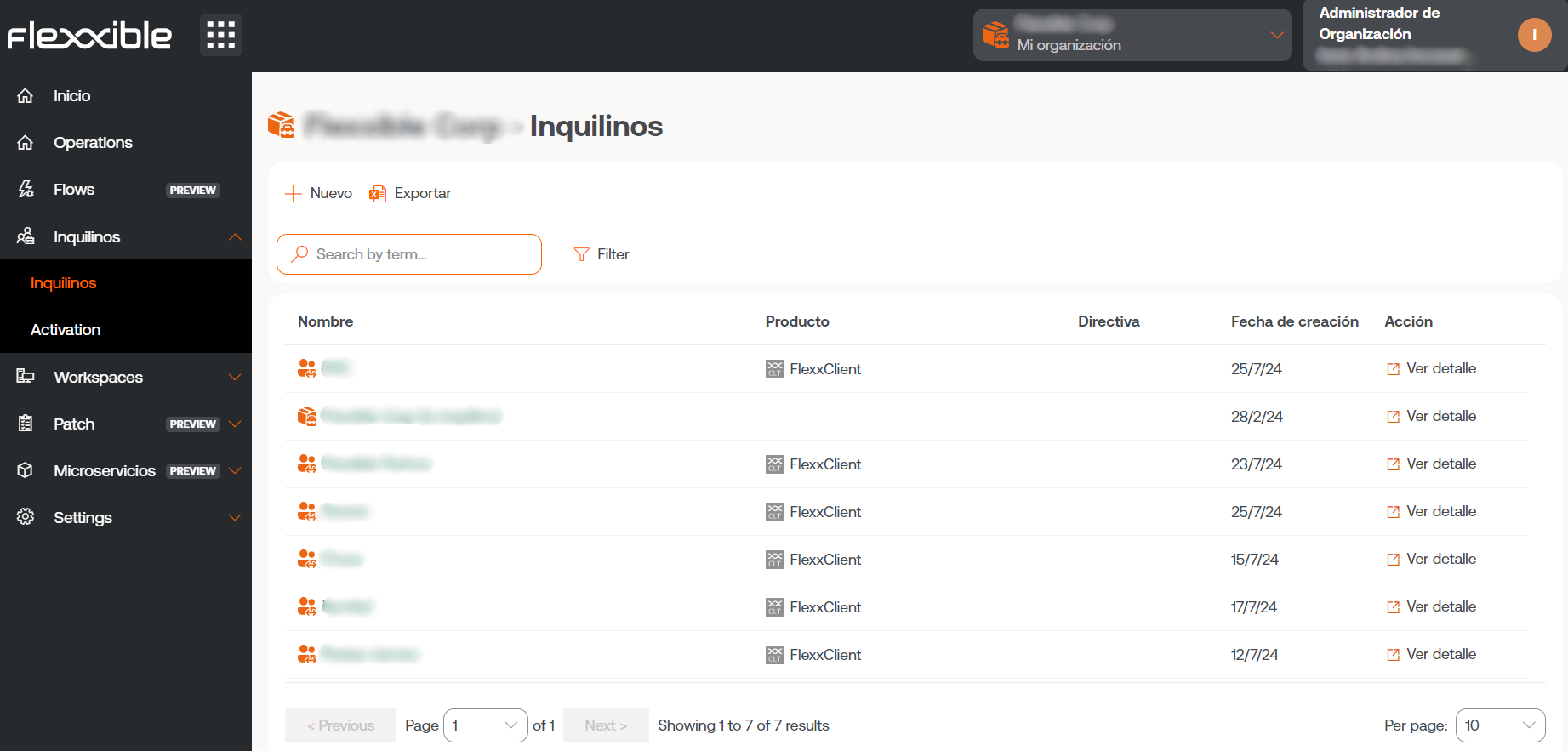Tenants
Tenants provides organizations operating in the managed services provider (MSP) model the ability to establish subsidiary entities that they can support whenever needed.
The main view of Tenants offers a list of organizations whose management is delegated, provides information on the Flexxible product they own, the date of their creation, and from View detail, gives the option to access more specific data.
By clicking on New a new tenant can be created. In addition to the previous data, you must insert email address, language, country, sector, product, and region; it also gives the option to assign a Policy. The Export button allows an excel file to be downloaded with the list of current tenants.

Types of organizations
Tenants created in Portal are assigned a profile type, which describes them as an organization. The types of organizations can generally be defined as client or partner, and establish relationships with one another, so that one or more of these organizations provide support to others that require administrative access to fulfill their task.
Partner-type organizations have the power to give administrative access to client-type (tenant) organizations that depend on them. In turn, a client-type organization has the possibility, if desired, to segment its organization into multiple sub-organizations to facilitate delegated administration.
If a client-type (tenant) organization decides to create sub-organizations, it will have the option to apply a Policy for tenant creation from a template, which will help configure multiple users, report groups, and accesses and will allow linking that new tenant to the existing instance of the Analyzer module (for organizations that have contracted FlexxClient and FlexxDesktop products) or assigning a new instance for this sub-organization.
Sub-organizations are very helpful in large environments with high user segmentation and multiple service providers or with very segmented technical teams, as it allows subdividing a complex organization into management units according to deployment requirements.